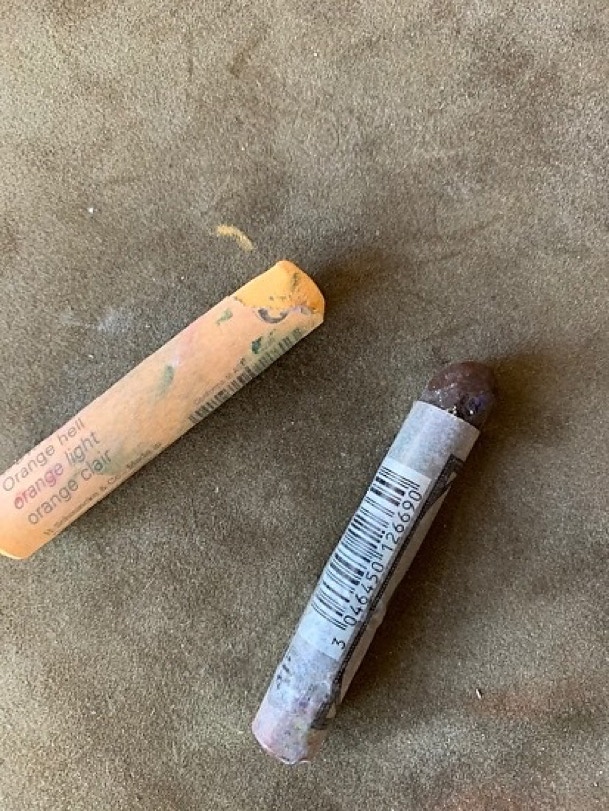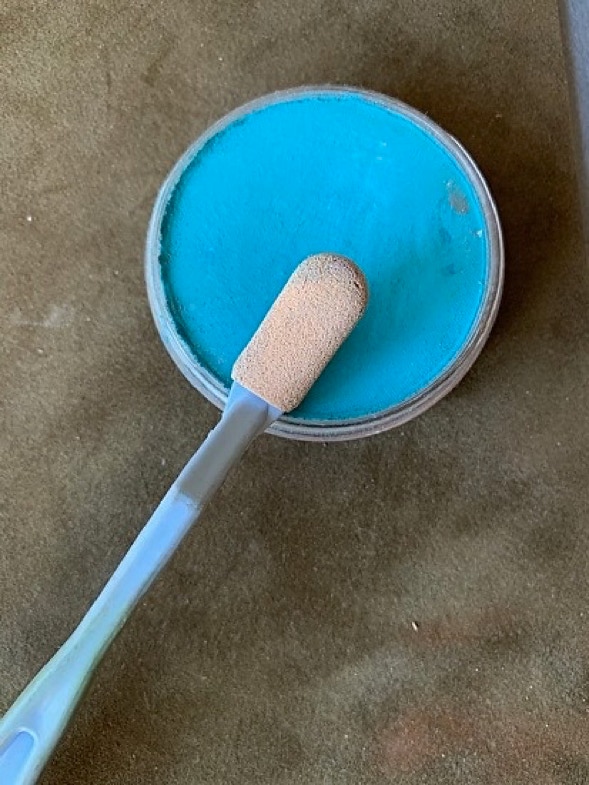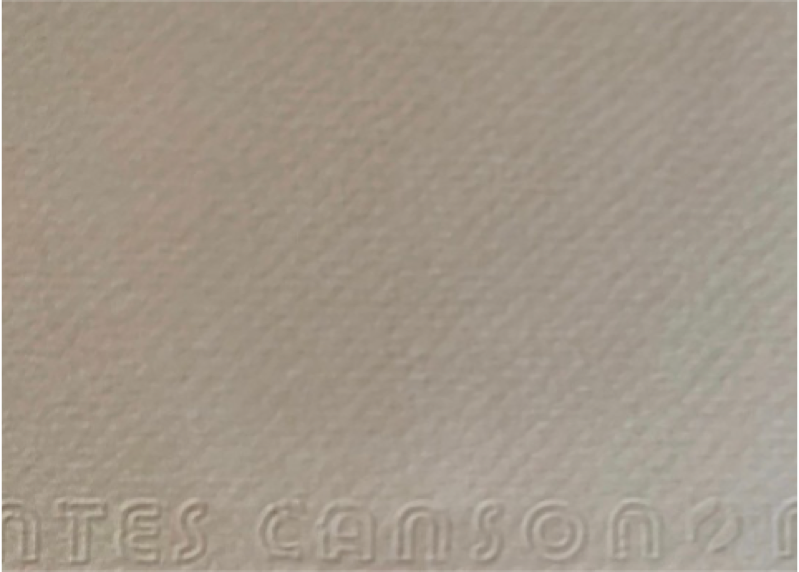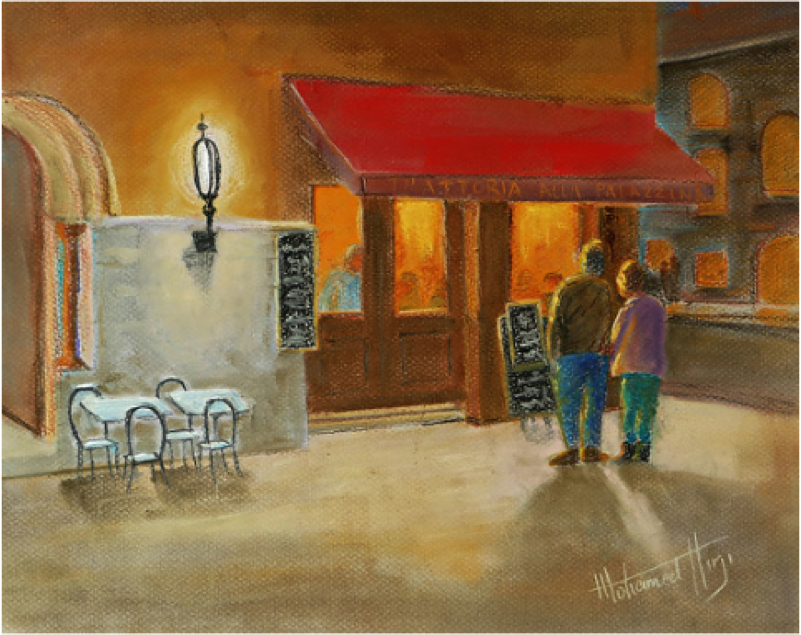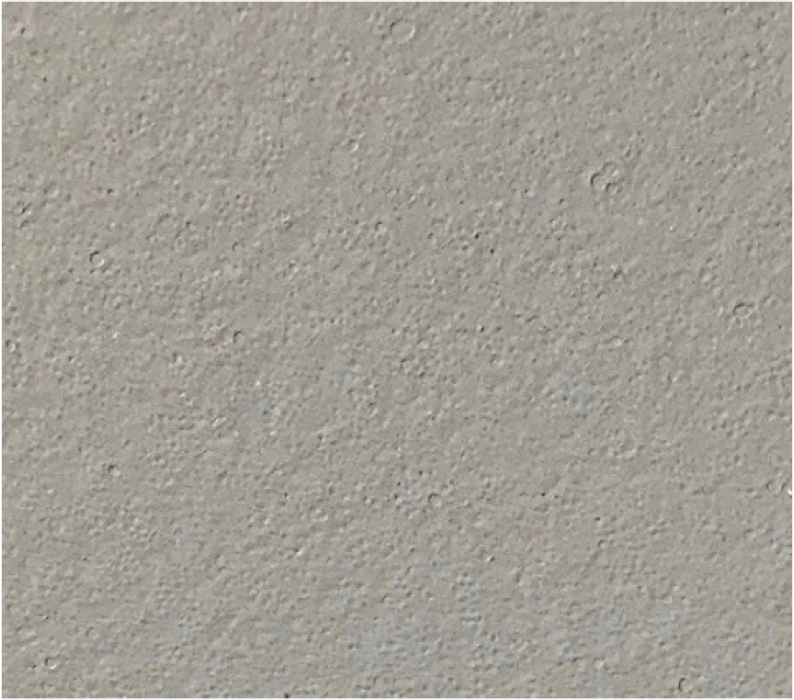A Container Of Pan Pastel With An Applicator.
Substrates: Just like the watercolour substrates which I discussed in my previous blog, substrates for pastels also need to be acid free to be archival, so the best ones are made of 100% cotton. However they require a coarse texture for the pastel pigments to adhere to the substrate. So in essence all pastel substrates - which are mainly pastel papers - are textured but unlike watercolour papers, the pastel papers are also available in different colours and shades.
The softer pastels do not require a lot of texture so a modest texture embossed into their surface suffices. The pattern looks more honeycombed or pitted. Some papers like the one below ( Canson Mi -Teintes) has a smoother texture on one side and a rougher texture on the other side, allowing the artist to choose the side most suited for different degrees of details they desire.
Canson Mi-Teintes Pastel Paper
The following is a pastel painting, "What"s For Dinner?" painted with Pan Pastels is on the Canson Mi-Teintes paper. If you watch closely, you will be able to appreciate the honeycomb, embossed texture.
What's For Dinner, Pastel Painting.
For the pastellists, who use Pan Pastels, manufacturers have developed a valour paper that has a suede like finish. Unlike the gritty and abrasive paper which would devour the sponge on the applicator, these valour papers are gentle to these sponges and also allow several layers of paint to be laid down easily.
Below is the magnified view of the (Colourfix Suede ) pastel paper.
